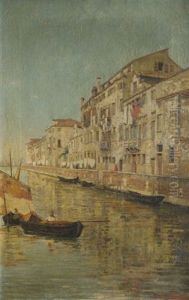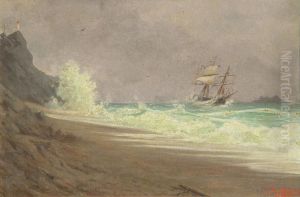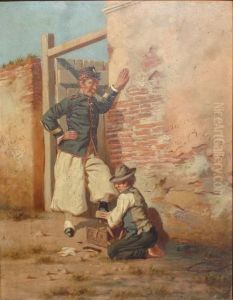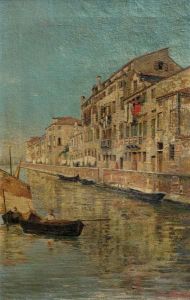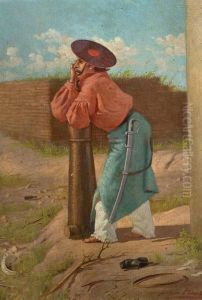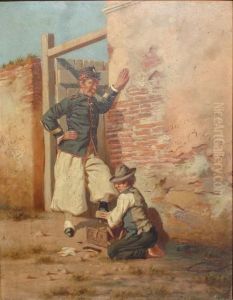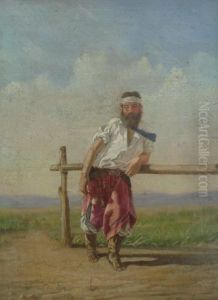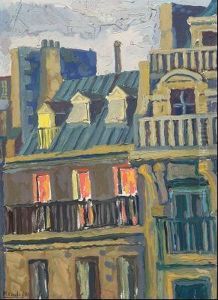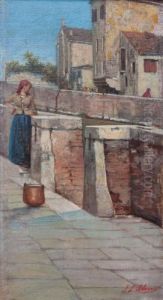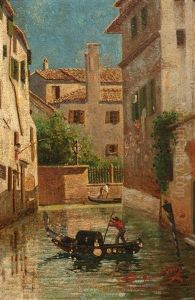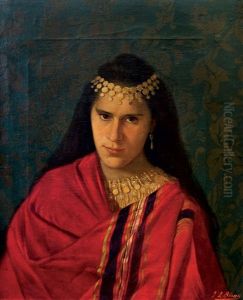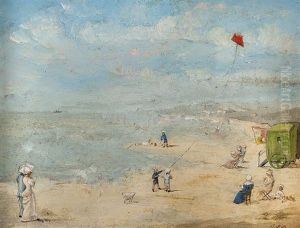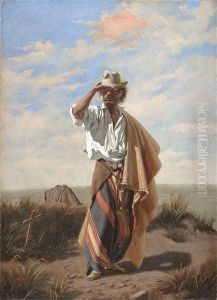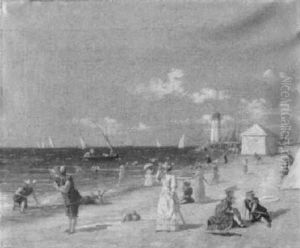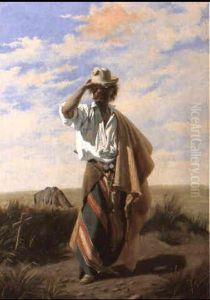Juan Luis Blanes Paintings
Juan Luis Blanes was a notable Uruguayan painter, born on June 8, 1830, in Montevideo, Uruguay. He is often referred to as the 'father of Uruguayan painting' and is known for his significant contributions to the development of fine arts in Uruguay. Blanes was primarily a portraitist and a painter of historical scenes, and his works played a key role in the construction of the national identity of Uruguay in the late 19th century.
Blanes showed an early interest in art and was mostly self-taught in his early years. His talent was evident from a young age, and he began to receive recognition for his work in Uruguay. Determined to refine his skills, Blanes traveled to Italy in 1854 to study art, a move that was crucial for his artistic development. During his time in Europe, he was deeply influenced by the Italian Renaissance and the European academic painting tradition. He studied in Florence and Rome, where he refined his technique and adopted a more sophisticated approach to composition and subject matter.
Upon his return to Uruguay in 1861, Blanes opened a studio and became a central figure in the Uruguayan art scene. He painted portraits of many important figures of the time, including politicians, military leaders, and other prominent personalities. His portraits were notable for their realism and attention to detail, and they remain a valuable historical record of the country's elite during that period.
In addition to portraiture, Juan Luis Blanes is celebrated for his historical paintings, which often depicted key events in the history of Uruguay and Latin America. One of his most famous works is 'La Paraguaya', which portrays the tragic aftermath of the Battle of Acosta Ñu during the Paraguayan War. His painting 'El Juramento de los Treinta y Tres Orientales' is another iconic piece that commemorates the oath taken by the Thirty-Three Orientals, a group of Uruguayan revolutionaries who fought for the country's independence from Brazil.
Blanes also explored themes of everyday life and the Uruguayan countryside in his work, contributing to the creation of a national aesthetic that celebrated the rural and the vernacular. His paintings of gauchos and rural scenes are celebrated for their authenticity and for capturing the spirit of the country's traditional way of life.
Juan Luis Blanes passed away on April 15, 1901, in Pisa, Italy. His legacy endures through his contributions to the visual culture of Uruguay. The Museo Juan Manuel Blanes in Montevideo, named in his honor, houses many of his works and serves as a testament to his enduring influence on the art and history of Uruguay.
